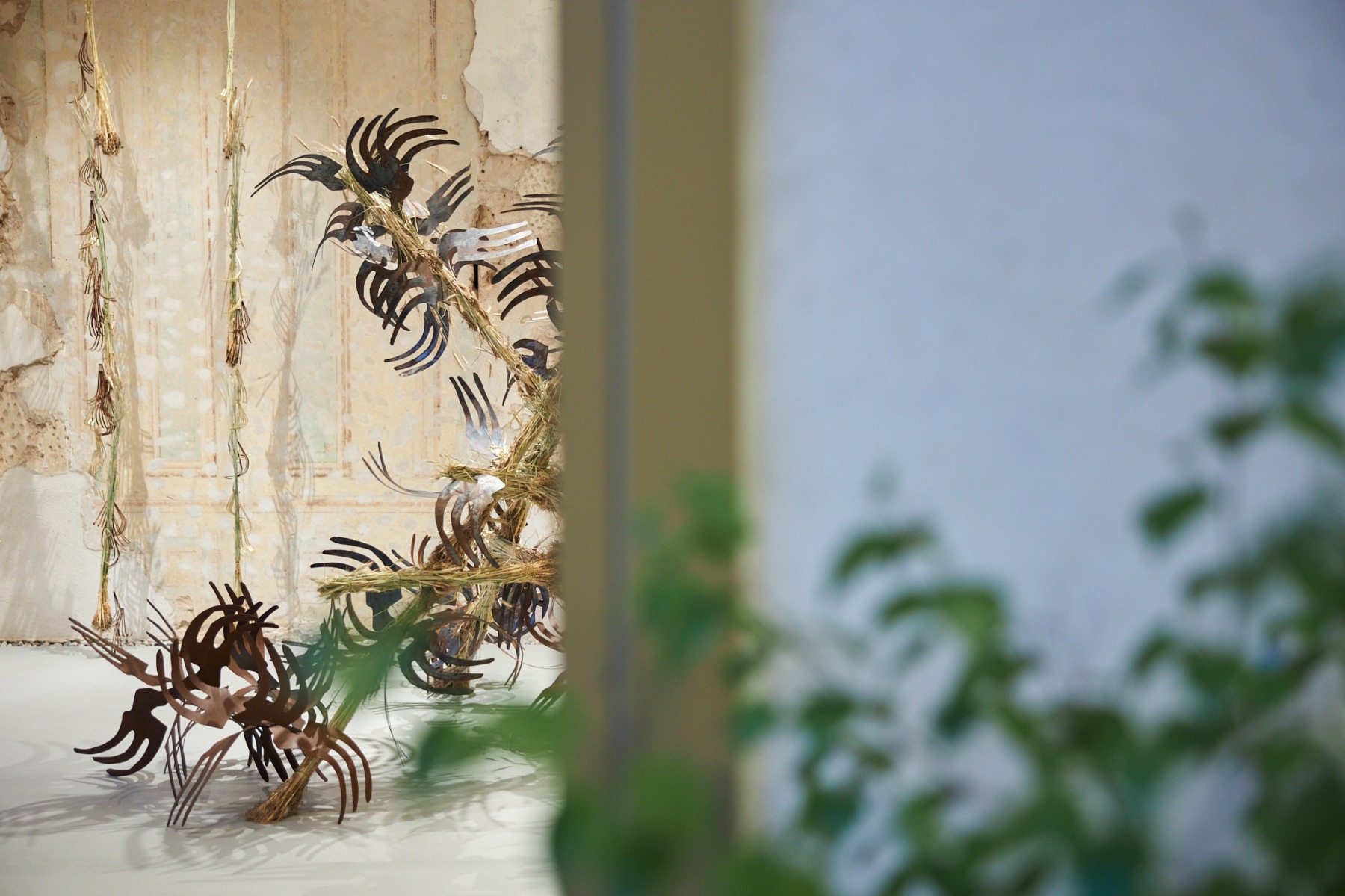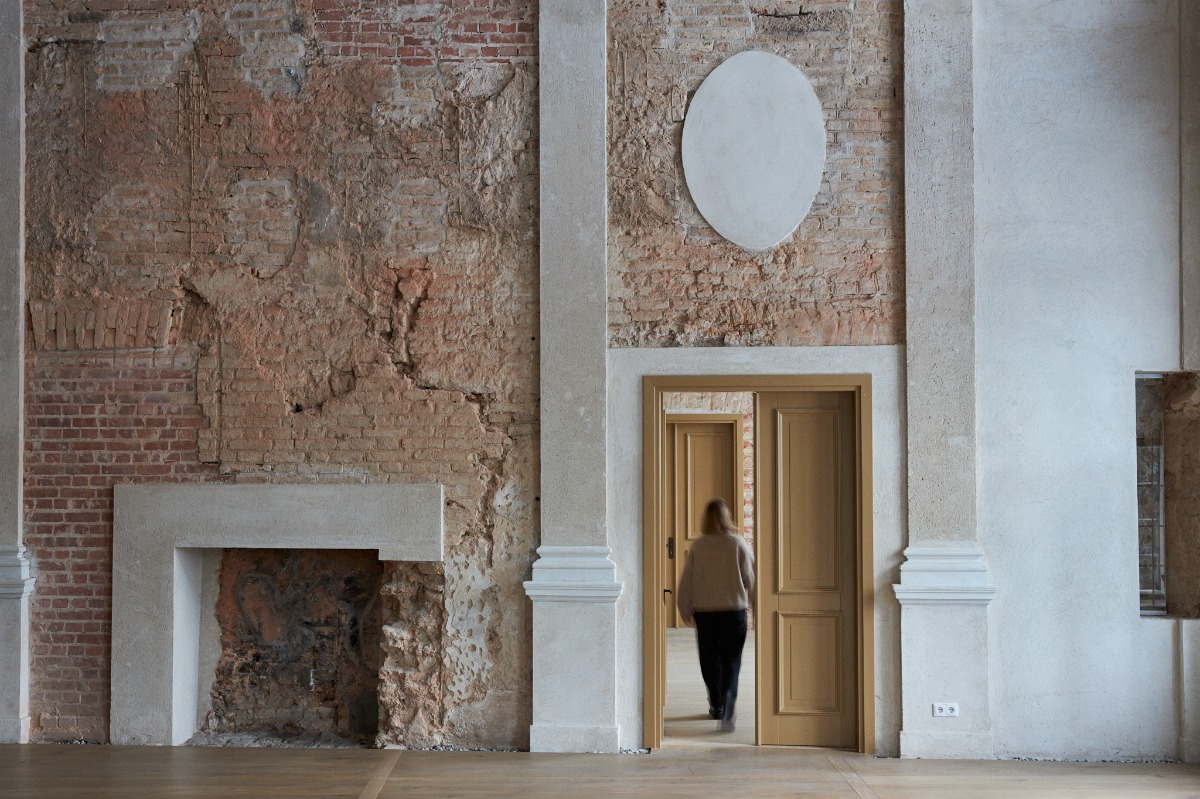
Sapieha Palace: connecting past and present
The long-awaited opening of the Sapieha Palace, where contemporary art connects with cultural heritage, happened last Friday in Vilnius.
The Sapieha Palace finally opened its doors to the public last Friday, aiming to become a significant cultural landmark not just within Vilnius but also across the wider region. The Palace welcomed its first visitors with a special programme of opening events, including inaugural exhibition openings, concerts of both traditional and contemporary music, guided walks with artists and curators, performances and listening sessions, informative tours on the history and restoration of the Palace, and a lively family-friendly workshop on Baroque bas-relief.
The Sapieha Palace this winter. Photo: Audrius Solominas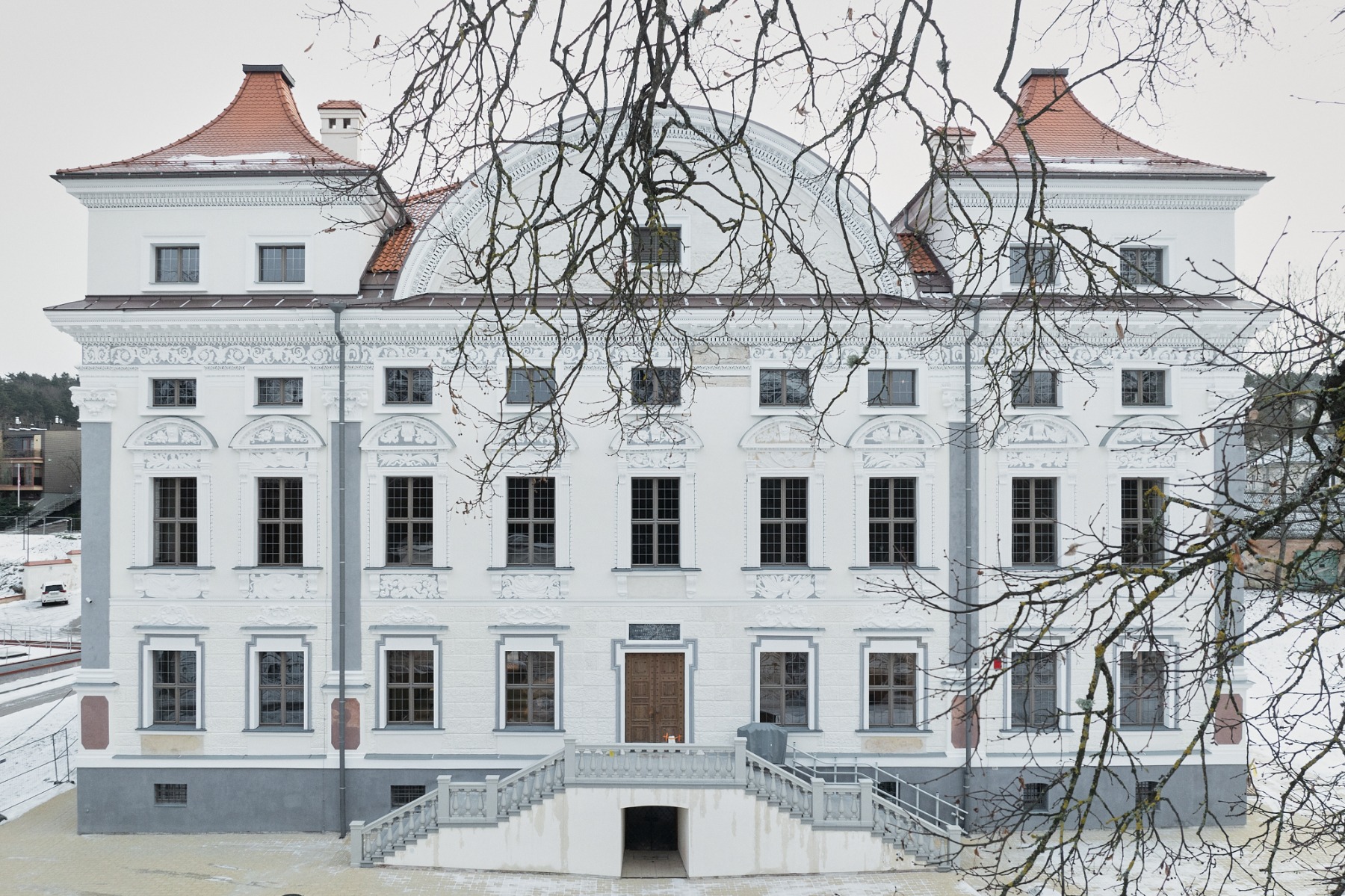
Through its activities, the Sapieha Palace addresses heritage preservation and adaptation to contemporary life, fostering an open and harmonious relationship with peers in culture, art, and science, as well as establishing links with partners and different urban communities. Its diverse spaces will not only showcase art and other artefacts but also host a variety of events, inviting visitors to return multiple times. The Palace is a structural unit of the Contemporary Art Centre (CAC), whose team has been developing its concept and overseeing the renovation of the historic building since 2017. The Baroque Sapieha Palace intends to become a distinctive attraction offering an engaging and dynamic programme of activities, and promoting a close relationship with its visitors and supporters.
Photo: Živilė Filmanavičiūtė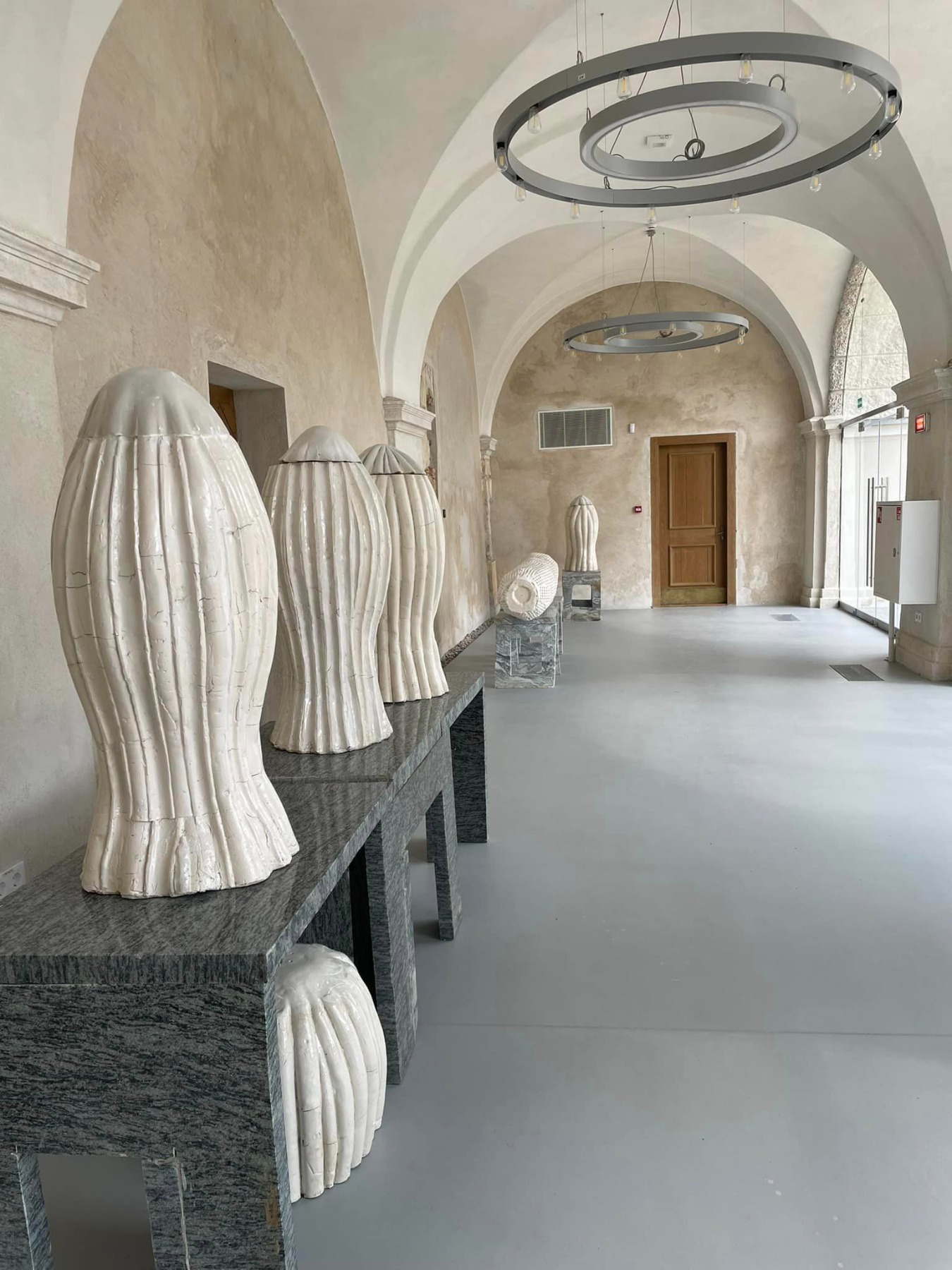
Gintautė Žemaitytė, Director of the Sapieha Palace, says: ‘The complexity of the programme is due to the concept of its operation, which aims to establish a cultural space that develops a dialogue between heritage and modernity, and offers opportunities for the widest possible audience to engage with culture. Our goal is for the Palace to become an appealing landmark for art enthusiasts who consider a week without art a bad week, for newcomers to the cultural life of Vilnius, for those attracted by the buzz of public events, and individuals seeking a calm, specialised experience in a cultural space.’
Photo: Živilė Filmanavičiūtė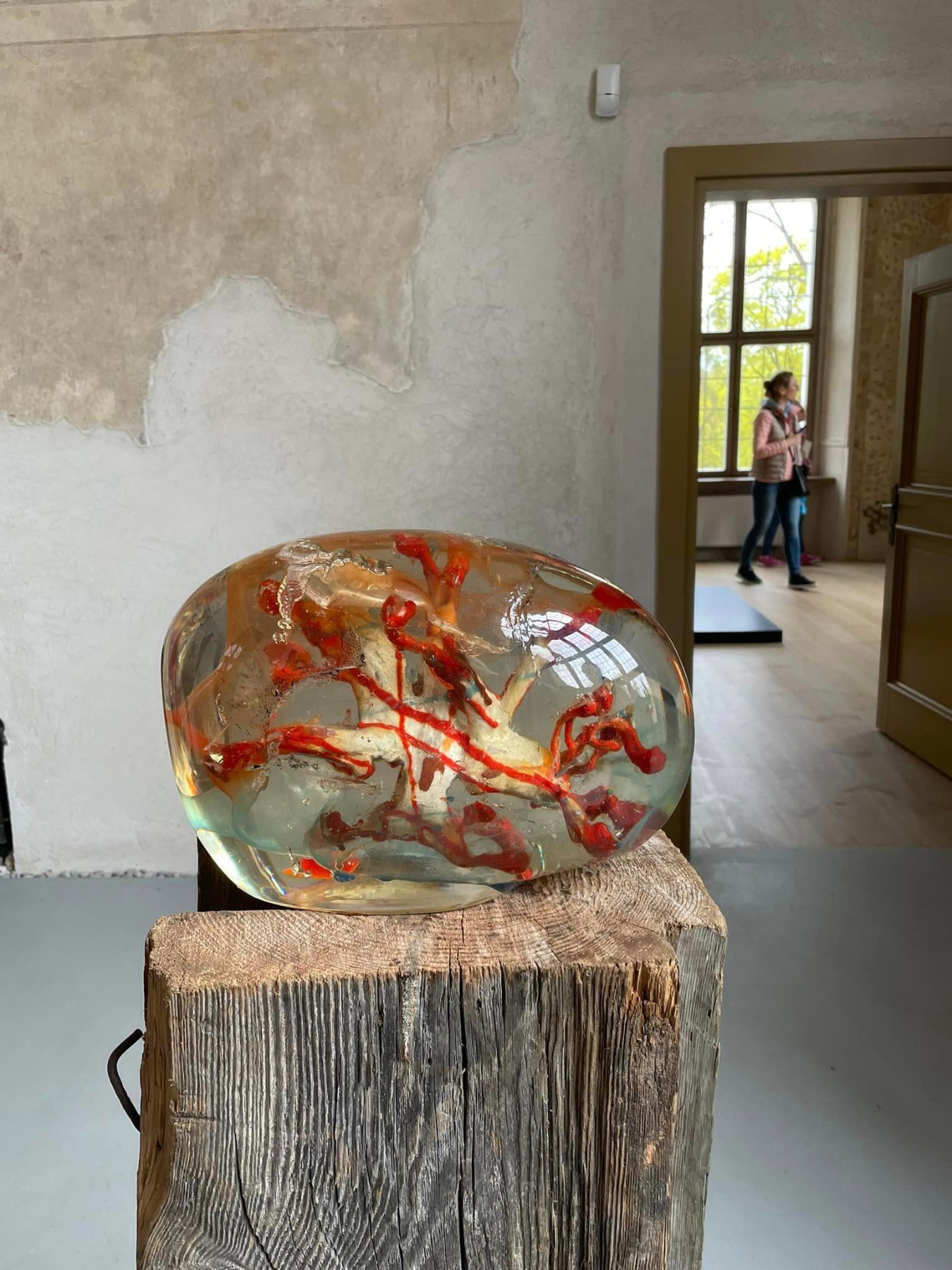
The ground floor of the Palace, always free of charge to visit, is hosting an exhibition of sculpture by Mindaugas Navakas titled Porcelain for the Palace, and the permanent display History Capsule. Historical artefacts and facsimiles of documents unveil the dramatic history of the Palace and the changes in the use of the building. In turn, the first floor is occupied with works from the group exhibition of contemporary art Refuge. This main exhibition will remain open until the end of the year and will transform over time as it is complemented by new works and artist interventions.
From the exhibition Refuge. Photo: Emilija Filipenkovaitė
Connections between contemporary art and cultural heritage are increasingly becoming the curatorial focus of new art institutions and globally significant exhibitions. The Contemporary Art Centre, a pivotal institution in presenting Lithuanian artists for over three decades and an integral part of the Vilnius art scene, has been entrusted with shaping a new vision for the Sapieha Palace. ‘Revisiting the past and looking for links with the present is particularly relevant today: with a hovering sense of turbulent times, we are increasingly uncertain about the future. The unique opportunity to seek a dialogue between the ideas of the present and the past in the exclusive context of the Sapieha Palace takes on profound significance, as this was (and soon will be again) possible to explore in the neutral spaces of the CAC,’ says Kęstutis Kuizinas, the Centre’s Director, commenting on the first Sapieha Palace exhibition Refuge curated by Edgaras Gerasimovičius and Virginija Januškevičiūtė. ‘I have no doubt that the Baroque architecture of the Sapieha Palace, testifying to its multi-layered history exposed within its masonry, will inspire more than one generation of artists to seek sensitive relationships with the present, leading to new discoveries.’
From the exhibition Refuge. Photo: Emilija Filipenkovaitė
Virginija Januškevičiūtė, one of the curators of the main inaugural exhibition, highlights that the theme of Refuge draws inspiration from the history of the building and contemplations on the significance of opening a new cultural space during tumultuous times: ‘What could the meaning of the inscription on the facade of the palace, proclaiming it a place to of protection for the war-weary, be in today’s context?’ The group exhibition features 18 works by both Lithuanian and international artists, encompassing film, photography, sculptural installation, drawing, conceptual, and musical work. ‘Like exploring a real city, we appreciate its architecture and critique it, observing the sunlight streaming through its beautiful windows and tracing its path, and enjoying the diverse corners of the building,’ says Januškevičiūtė.
‘Refuge’ includes works by Andrius Arutiunian, Vytautas Balčytis, Giulia Crețulescu, Bojana Cvejić ir Lennart Laberenz, Vladas Drėma, Ulrik Heltoft, Mindaugas Lukošaitis, Marianna Maruyama, Petras Mazūras, Domas Noreika, Rita Olšauskienė, Alina Popa, Miljohn Ruperto, Iza Tarasewicz, Gintautas Trimakas, Peter Wächtler and Darius Žiūra.
Photo: Tautvydas Stukas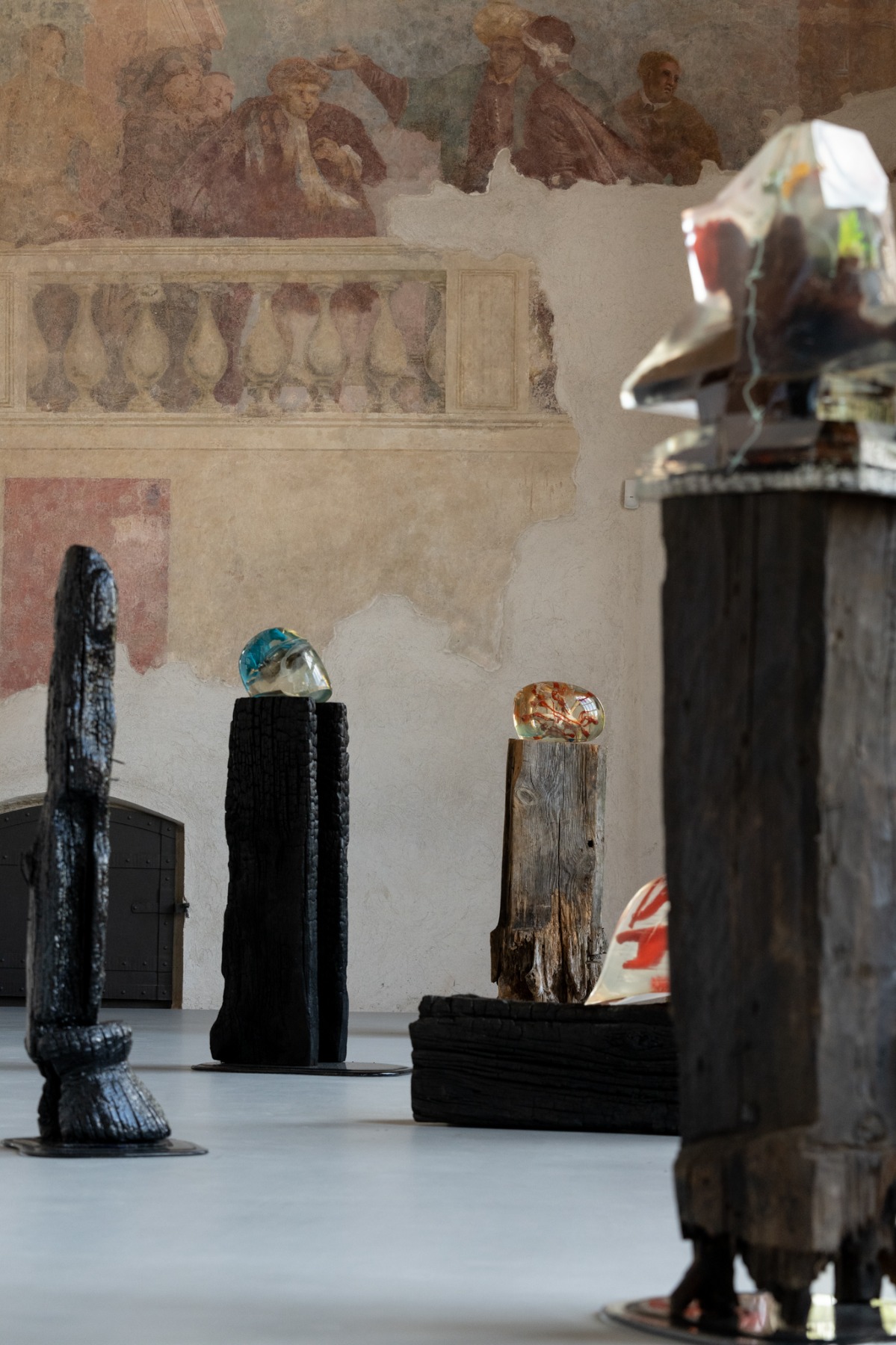
On the ground floor of the Sapieha Palace, which opens with a display of Mindaugas Navakas’ sculptures, the exhibitions will continue to change. In the context of the main show, which will be open for almost seven months, additional events closely related to the Palace’s overall educational and cultural programme will be introduced. ‘The exhibition will continually evolve with the inclusion of new works, accompanied by cross-genre listening sessions featuring contemporary live music and sound art by composers Gediminas Žygus, Yen Chun Lin, Agnė Matulevičiūtė, and Andrius Arutiunian. Every Wednesday, artist and restorer Domas Noreika will bring to life his ‘restorer's imagination table’ – a custom-designed vitrine-table by designer Kotryna Gurskaitė, where Noreika keeps a collection of materials used in his work. He will present the application of these materials in a live demonstration during meetings with visitors,’ says Edgaras Gerasimovičius, the other curator of Refuge.
Photo: Audrius Solominas